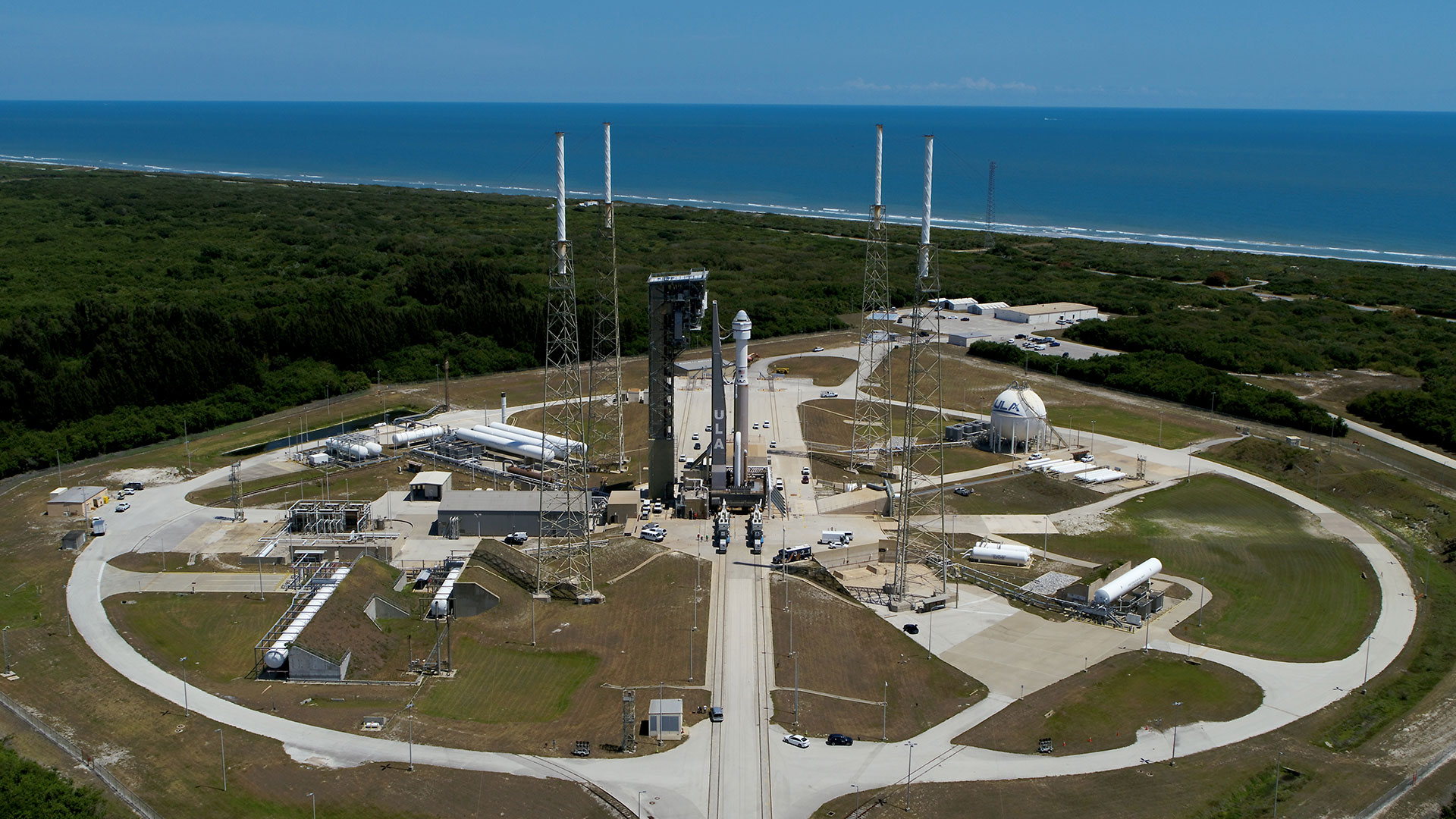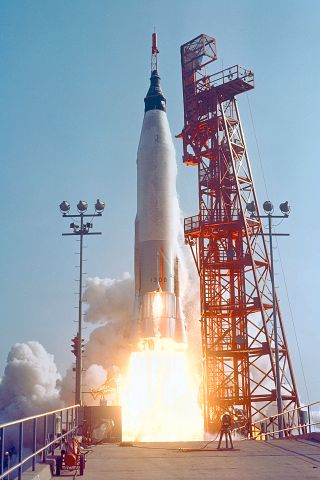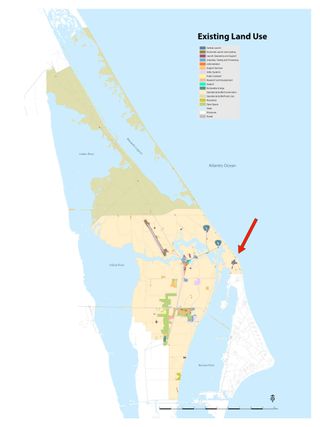Boeing Starliner brings astronaut launches back to Atlas rocket and Cape Canaveral

United States
Breaking News:
The Mavericks’ major gambles pay off as Luka Dončić, Kyrie Irving lead charge to West finals
Grinding our bums, flashing our boobs: the internet is making juveniles of us all | Martha Gill
Schools in England send police to homes of absent pupils with threats to jail their parents
Jürgen Klopp brought not only victories but a fan’s passion for the game | Kenan Malik
Rishi Sunak’s scare tactics aren’t going to work against a soothing Keir Starmer | Andrew Rawnsley
Washington DC
Sunday, May 19, 2024


The launch of two astronauts on a Boeing commercial spacecraft will mark a first for the company, but will also bring U.S. human spaceflight back to a rocket and launch site that has not been used by crews for more than 50 years.
The Crew Flight Test (CFT) for Boeing’s CST-100 Starliner capsule is ready to fly NASA astronauts Barry “Butch” Wilmore and Sunita “Suni” Williams on an eight-day mission to the International Space Station. Liftoff is scheduled for today (May 6) at 10:34 p.m. EDT (0234 GMT on May 7).
The long-awaited launch, which follows two uncrewed orbital flight tests in 2019 and 2022, respectively, will lead to the Starliner conducting regular crew rotation missions to the space station beginning next year.
To reach orbit, the Starliner will fly atop a United Launch Alliance (ULA) Atlas V rocket from Space Launch Complex-41 (SLC-41) in Florida. The pad is located less than 7 miles (11 kilometers) from where the first and last (up until now) astronauts launched on Atlas rockets.
Related: How to watch Boeing’s 1st Starliner astronaut launch on May 6 live online
“There’s some history surrounding this mission,” said Gary Wentz, ULA’s vice president for government and commercial programs, at a prelaunch press conference on Friday (May 3). “Back in 1962, John Glenn flew on the first Atlas and coincidentally, 62 years later, we’re flying our 100th Atlas [V] with Butch and Suni on board. So that’s very significant for our team.”
Originally designed as the United States’ first operational intercontinental ballistic missile (ICBM), the Atlas D rocket was modified to launch the first Americans into Earth orbit. Four NASA astronauts flew on the Convair booster, including Glenn, Scott Carpenter, Walter “Wally” Schirra and and Gordon Cooper.

On May 15, 1963, Cooper’s Mercury-Atlas 9 mission lifted off from Complex 14, just south and slightly east of the Starliner pad at SLC-41.
“It was certainly beautiful,” said Cooper as he caught his last sight of his ride into orbit as it fell away from “Faith 7,” his Mercury spacecraft. “It was very bright silver in color, with a frosty white band around the center portion of it.”
Although they are in the same family of rockets, the Atlas D and the Atlas V have very little, if anything in common, other than their name. The modern Atlas, designed by Lockheed Martin, is powered by a Russian RD-180 engine on its first stage and a Centaur upper stage.
Introduced in 2002, the Atlas V is the United States’ longest-serving active rocket. The Starliner will be one of the vehicle’s last payloads, as it is set to retire after 16 more flights to make way for ULA’s new Vulcan heavy-lift rocket.
ULA modified the Atlas V to be able to fly crewed Starliner missions.
“For this, we designed two different technologies to support human spaceflight,” said Wentz. “We put an emergency detection system on board that monitors all of the vehicle’s systems, and in the event that we had an off-nominal performance of one of those systems and it required the crew to perform an abort, this will actually automatically trigger that abort.”
“As well, [we built] a dual-engine Centaur, which is really bringing it back from a heritage vehicle that we flew previously, and what we are flying in the future on Vulcan,” he said.
Related: Facts about ULA’s new Vulcan Centaur rocket
In addition to bringing the Atlas back into the family of human-rated rockets, the launch of Boeing’s Starliner CFT mission will also be the first crewed flight to depart Earth from the same side of the Cape as where all astronauts flew from prior to the first missions to the moon.
“One other historical fact,” said NASA Administrator Bill Nelson at Friday’s briefing. “This is the first time since the Apollo 7 launch that a human astronaut launch is actually on what used to be the Cape Canaveral Air Force Station and now is, of course, Cape Canaveral Space Force Station.”
Florida’s Space Coast, as managed by the Eastern Range, is divided into two major launch sites: the Cape Canaveral Space Force Station (as it is known today), which dates back to 1949, and NASA’s Kennedy Space Center, founded in 1962. On Oct. 11, 1968, NASA’s first crewed Apollo mission, Apollo 7, launched from Complex 34 into Earth orbit. It was the last time (until now) that a crew lifted off from a pad on the Cape side of the range.
(All subsequent astronaut launches, between 1968 and today, have been from Kennedy’s Launch Complex 39 A and B pads.)
By journalistic dateline and general understanding, SLC-41 is a Cape Canaveral launch pad, but the distinction is less clear.

RELATED STORIES:
While ULA leased the pad and its associated facilities from the Air Force, the land on which both sit is part of Kennedy Space Center. A land use map published by NASA shows SLC-41 on the agency’s property and a “notice of availability” offers the launch site for vertical launch operations.
So is Starliner launching from the Cape or Kennedy? An analogy for the situation may be the United Nations Headquarters in New York City. While the building’s footprint is in Manhattan, the land it occupies and the facilities atop it are neither part of New York or the United States.
In a similar way, LC-41 sits within Kennedy Space Center property, but the Atlas pad is the responsibility of the Cape Canaveral Space Force Station.
“NASA’s John F. Kennedy Space Center and the Department of the Air Force have maintained a relationship of cooperation for the use of Launch Complex 41 for over 25 years. This cooperation has provided mutual benefit to both federal partners for many years,” read a NASA statement. “The current agreement began Jan. 1, 2024, and may be renewed annually for nine additional years. This cooperation will continue to benefit NASA and the United States Air Force as both agencies strive to complete their missions in the most efficient manner possible.”
Breaking space news, the latest updates on rocket launches, skywatching events and more!
Follow collectSPACE.com on Facebook and on Twitter at @collectSPACE. Copyright 2024 collectSPACE.com. All rights reserved.